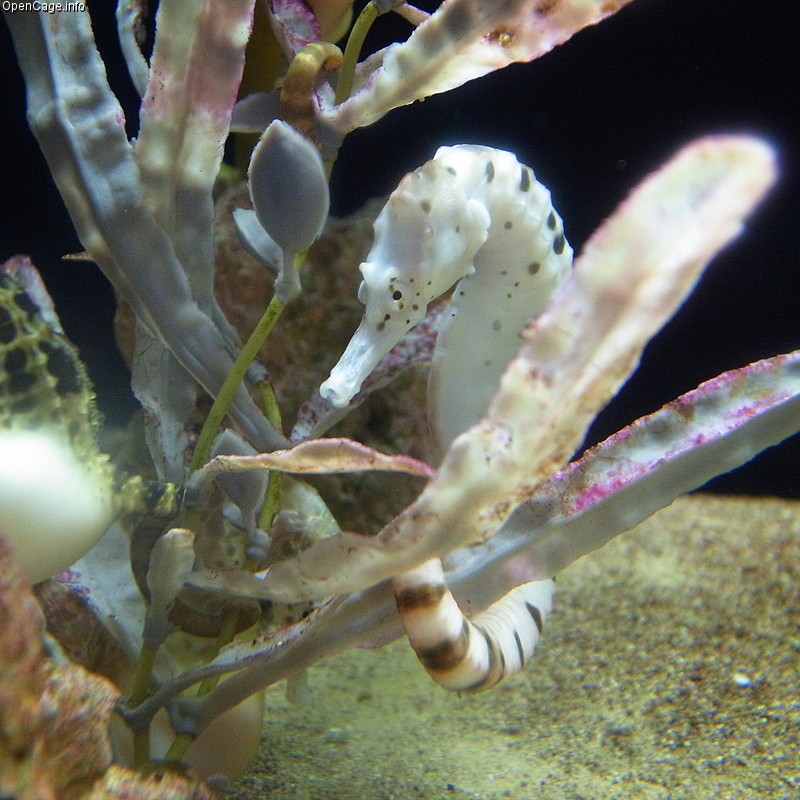Big-belly seahorse
A species of Seahorses, Also known as Eastern potbelly seahorse Scientific name : Hippocampus abdominalis Genus : Seahorses
Big-belly seahorse, A species of Seahorses
Also known as:
Eastern potbelly seahorse
Botanical name: Hippocampus abdominalis
Genus: Seahorses
Content
Description People often ask
 Photo By opencage , used under CC-BY-SA-2.5 /Cropped and compressed from original
Photo By opencage , used under CC-BY-SA-2.5 /Cropped and compressed from original Description
The big-belly seahorse has a forward-tilted, a long-snouted head, a distended but narrow pot belly, and a long, coiled tail. It swims using its dorsal fin with a vertical stance; when not swimming, it coils its prehensile tail around any suitable growth, such as seaweed, waiting for planktonic animals to drift by, when they are sucked up by the small mouth set at the tip of the snout much like a vacuum cleaner. Seahorses are voracious feeders, eating mainly crustaceans, such as shrimp, and other small animals living among the seaweed, such as copepods and amphipods. They do not chew, so they can eat to excess because of their small gut tract. Each eye moves separately, making it easier for them to see food and predators. Distinguishing males from females is easy: The male has a smooth, soft, pouch-like area at the base of its abdomen where the stomach meets the tail on the front side. Males also have a fin there, but it is less obvious. The female has more of a pointed stomach with a very obvious fin at the base of it.
* Disclaimer: The judgment on toxicity and danger is for reference only. We DO NOT GUARANTEE any accuracy of such judgment. Therefore, you SHALL NOT rely on such judgment. It is IMPORTANT TO SEEK PROFESSIONAL ADVICE in advance when necessary.
People often ask
Where does the big-belly seahorse live?
How big does big-belly seahorse get?
What does big-belly seahorse eat?
Scientific Classification
Phylum
Chordates Class
Fish Order
Seahorses and pipefishes Family
Pipefishes and seahorses Genus
Seahorses Species
Big-belly seahorse